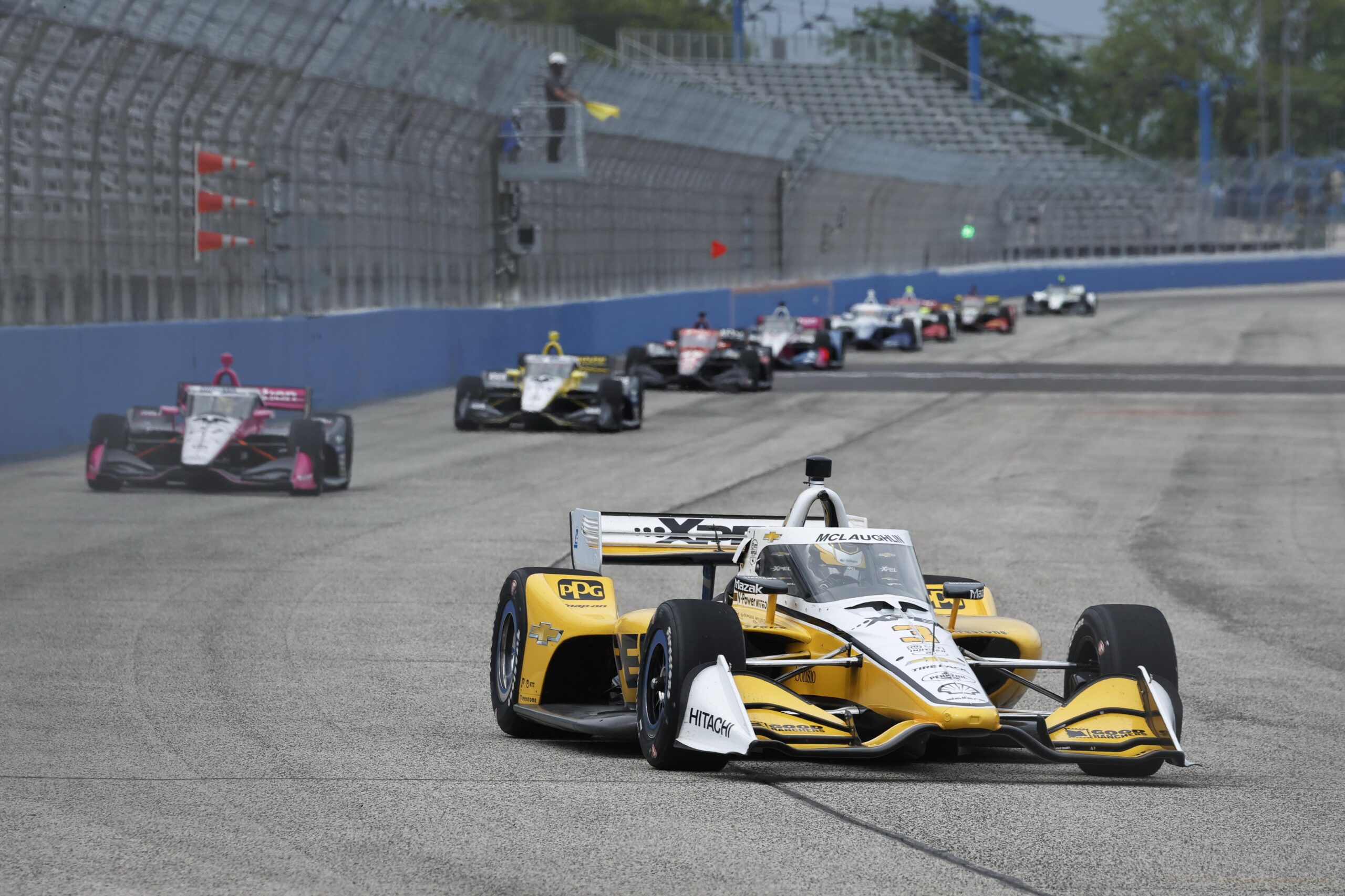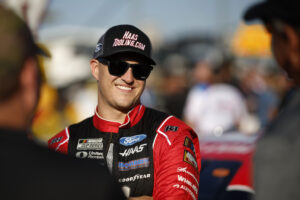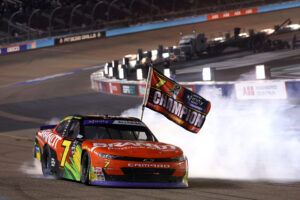NTT IndyCar Series is working to release its biggest technological development to date; with the introduction of the hybrid system, it’ll become the first oval series to utilize an electrified powertrain.
The road to the hybrid system has been a long time coming, with IndyCar first proposing the idea in 2019. This allowed companies to pitch for the development contract, with an expected release in 2022. However, the pandemic pushed matters back a long while. General Motors/Chevrolet and Honda combined efforts for the new engines. Honda took the reins on developing the hybrid software that will be released by McLaren.
Hybrid testing began in August 2023, although it was confined to just four teams; those with engines supplied by Chevrolet (Arrow McLaren, Team Penske) and Honda (Andretti Global, Chip Ganassi Racing). The rest of the grid had their first taste of the hybrid system in March at the previous hybrid test at the Indianapolis Road Course.
Since then, the hybrid system has been a hot-button topic within IndyCar. How well will it integrate? How will it affect team strategy and driveability? And, how do the drivers feel about the incumbent change? With the most recent bout of hybrid testing having taken place on Tuesday, June 11, we have a better insight into the answers to those specific questions and more.
Hybrid Testing Takes On The Milwaukee Mile
The site for Tuesday’s hybrid testing was the Milwaukee Mile, with the ultimate purpose of understanding how the hybrid system performs under (simulated) race conditions, including group running and pit stops. It was the largest group of hybrid testing to date, with twenty cars and drivers running in the oval test.
Official results for the hybrid testing group running were tallied. Will Power took the fastest speed at 161.521 mph. Josef Newgarden took second, with 160.759, and Scott McLaughlin ran third at 160.639. David Malukas, who had been released earlier in the season by Arrow McLaren following an injury, jumped in the car for Meyer Shank Racing for the first time. It was announced last week that the 22-year-old would join the team for the remainder of the season.
The full results can be found here, and although it does offer an understanding of which drivers were the most familiar and/or comfortable with running the hybrid system during the test, the full scope is far greater than just the timesheet.
How The IndyCar Hybrid System Works
At its most basic level, the hybrid system contains a low voltage 48v Motor Generator Unit (MGU) and Energy Storage System (ESS) wrapped up together and stored in the bellhousing (right in between the internal combustion engine and the gearbox). Installing the hybrid system into the pre-existing Dallara IndyCar chassis has proved to be a challenge. More than 45kg had to be removed from the chassis to accommodate the ERS.
The MGU incorporates a super capacitor for energy. This alleviates the need (and weight) of a battery. It’s a lighter component that will also allow cars to be started at will, rather than with external assistance. This handy feature will also reduce the number of course yellows due to stopped cars needing to be re-started.
When it comes to regenerating the power unit, two options are given; either an automatic process during braking or throttle position or a manual process via a button on the steering. Deployment of the additional horsepower will be similar to the existing Push-to-Pass system. However, unlike Push-to-Pass, the hybrid system will remain available to the drivers throughout the race. Importantly, there will be constraints on the amount of energy able to be deployed per lap dependent upon track length.
It’s expected that over the next few seasons with the hybrid system in place, the amount of additional horsepower will only increase as the technology itself progresses.
Unique Challenges Arise From The Hybrid System
The introduction of the hybrid power unit has done more than just reignite the flames of technological innovation in IndyCar. It’s also provided some unique challenges to the drivers, and their teams.
Drivers will have to learn how and when it’s best to deploy the extra energy or regen the system. This is largely based on the track layout.
“On a short oval, you lift and some of the time you need to brake, but you definitely lift coming into the turns. There’s the opportunity there for regen. And then on the super speedway in the race, even if you’re the leader as the car handling is going away, you start to lift a little bit, so there’s opportunity to regen in there,” Darren Sansum, managing director of engines at IndyCar, explains.
It will also be an ongoing challenge for teams to find when and where the hybrid system is most efficient. Theoretically, the driver will feel a greater difference from the hybrid system coming off of corners, entering an apex, and during low rpms. As opposed to flying laps and long straights.
“There’s so much to change: manual regen, auto regen, how much regen, what’s gain, what’s this, what’s that. It’s the opposite of F1 where it’s pre-programmed and the driver just drive. It actually does affect the way the car handles a lot. You’re trying to balance that, too, right? I think this is easiest for me on a personal level, but it really didn’t work for my car balance. There’s a hell of a lot to learn in a very short period of time, unfortunately,” Graham Rahal said, providing his perspective after the 20-car group hybrid system test on Tuesday, June 11.
Time will tell
From the simulation tests, data shows that the hybrid system is also useful on race restarts. Which hopefully will increase the amount of overtakes.
The hybrid system shows a lot of positives, but it’s going to take time for drivers to adjust. For teams themselves, the engineers need to familiarize themselves with a completely new powertrain and software. The strategists will also need to determine how best it’s used during competition.
For IndyCar, it’s another exciting reason for fans to tune in and a boost of innovation and engagement from suppliers.
Chip Ganassi Racing and Juncos Hollinger Racing did not participate in the June 11 hybrid testing. This is due to their drivers racing in the 24 Hours of Le Mans. Those drivers and teams will have the opportunity to test the system later in the season.
The official hybrid system debut will be at the Honda Indy 200 at Mid-Ohio presented by the 2025 Honda Civic on July 7.






